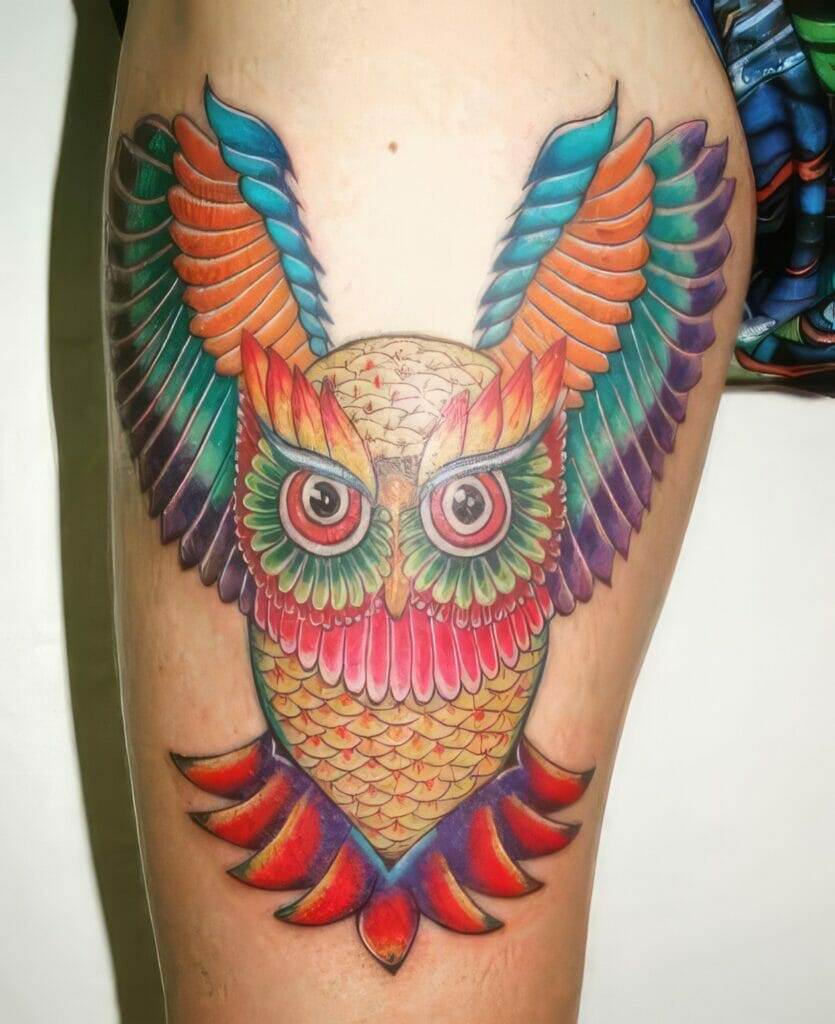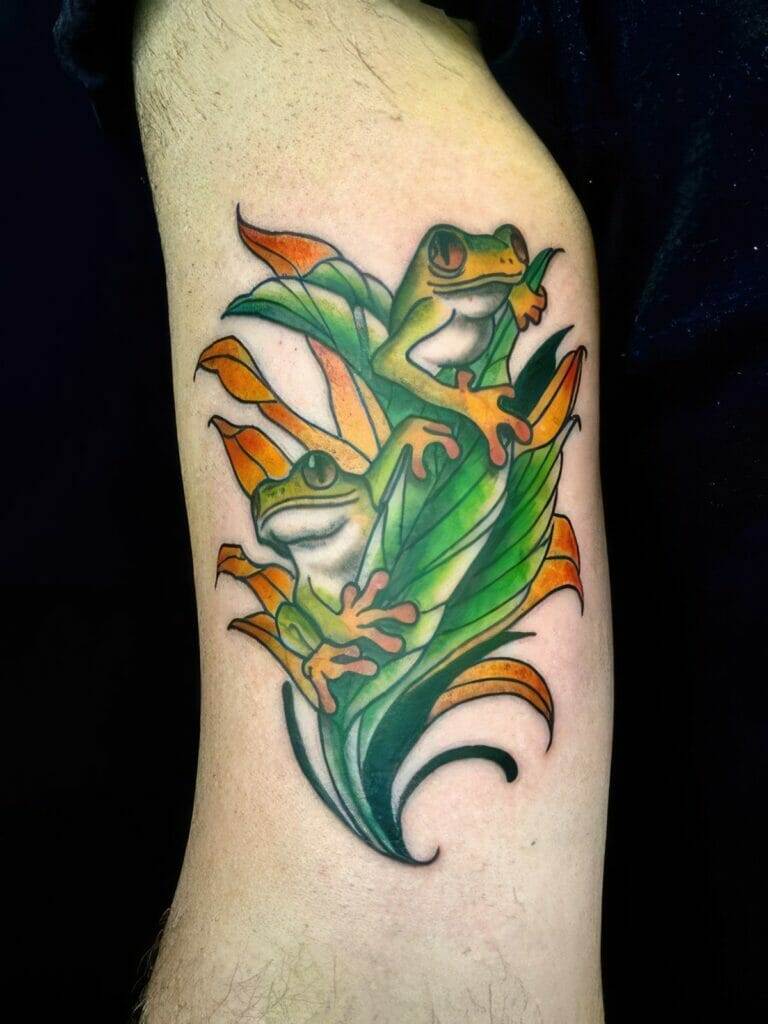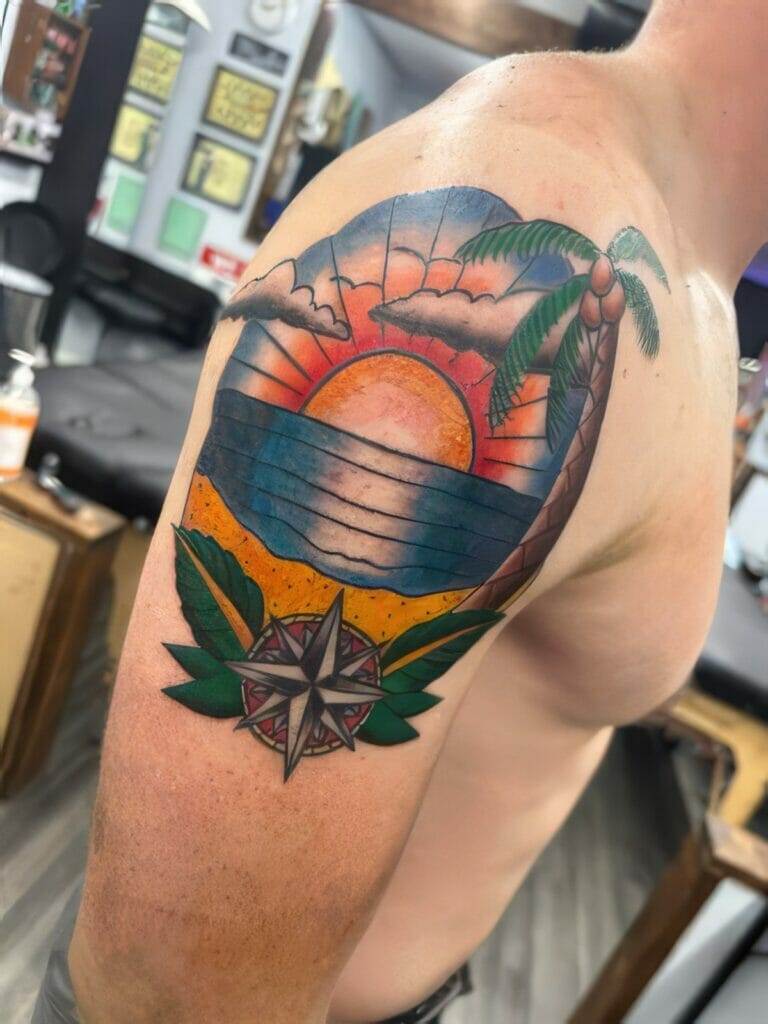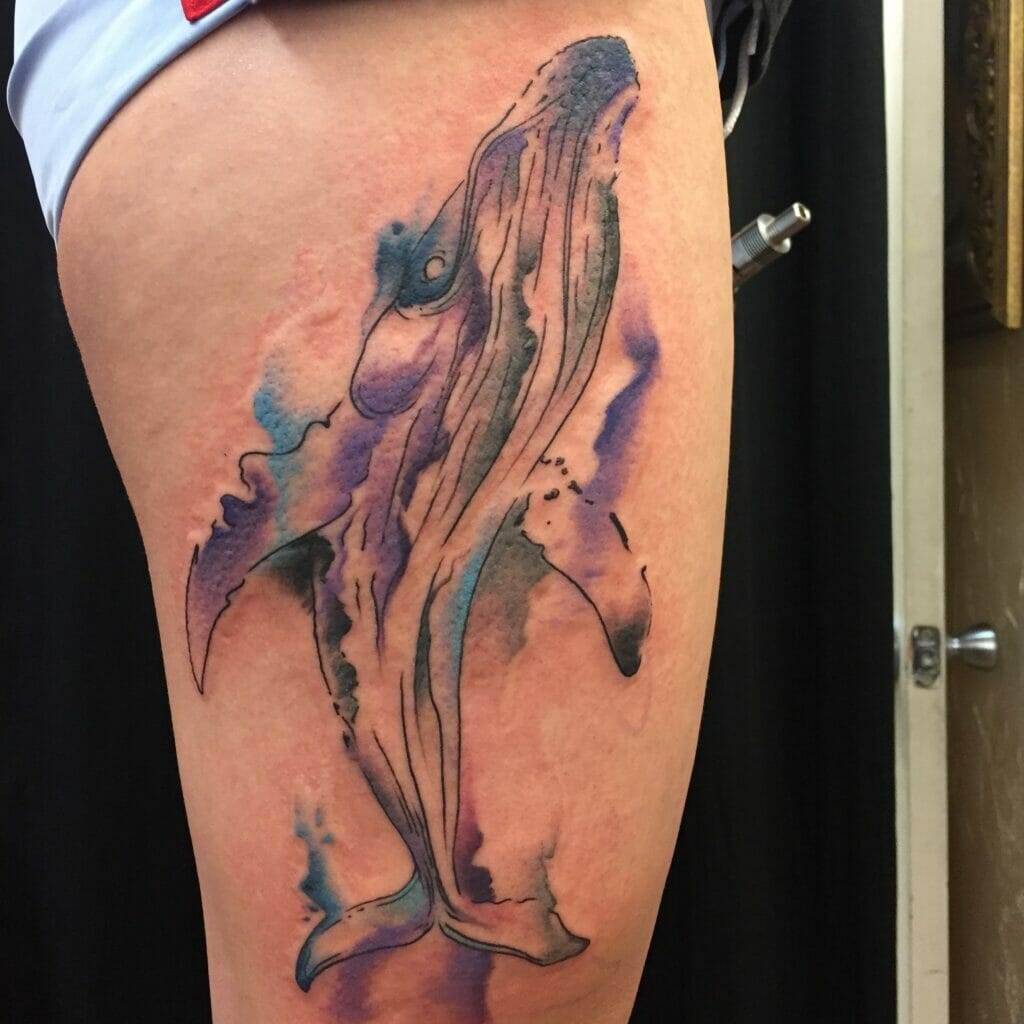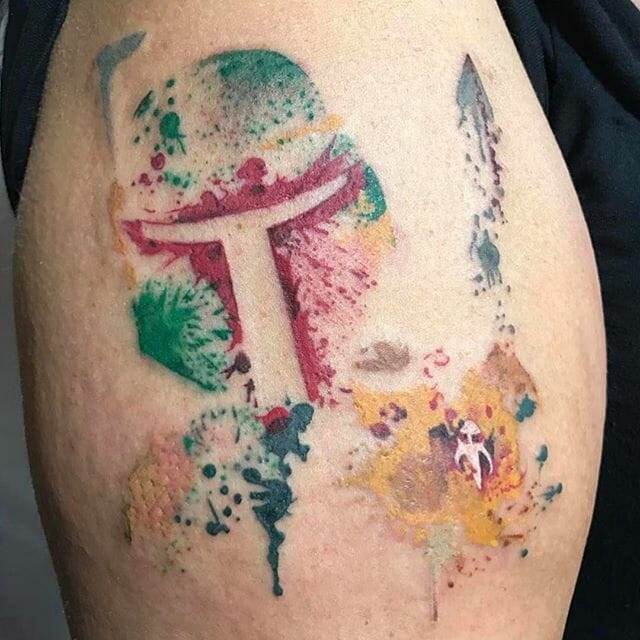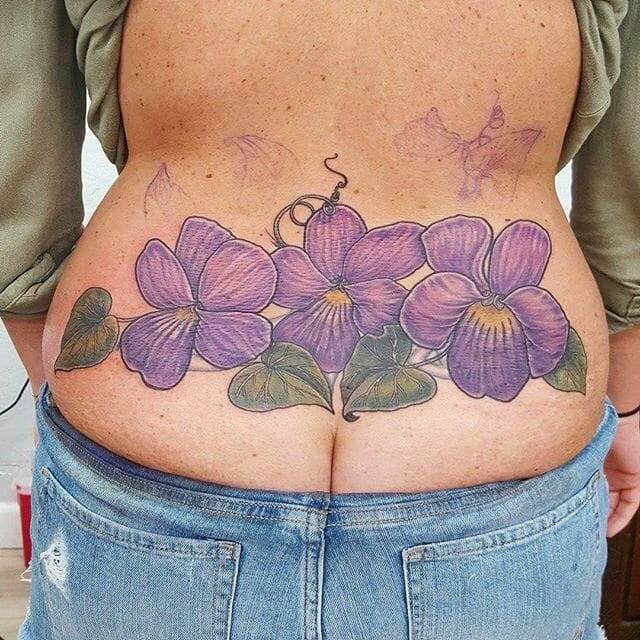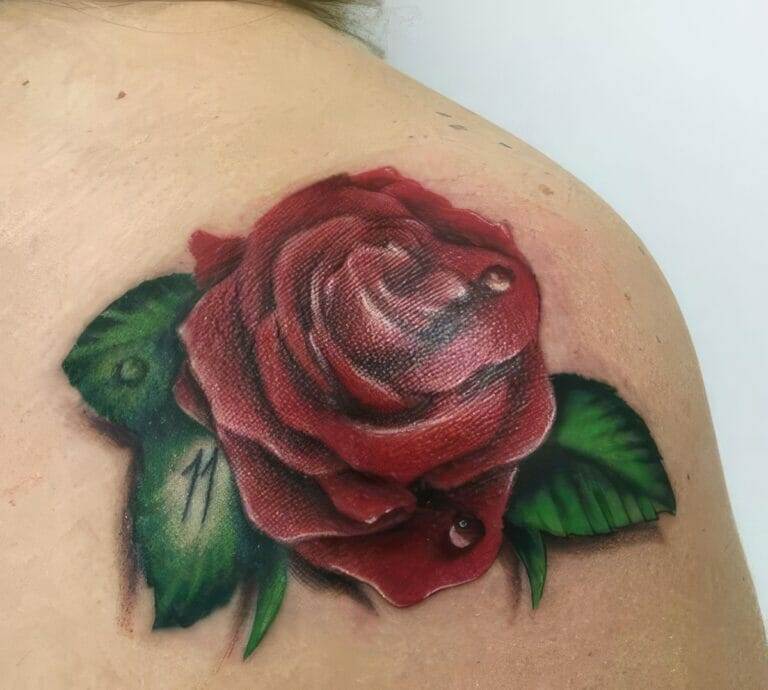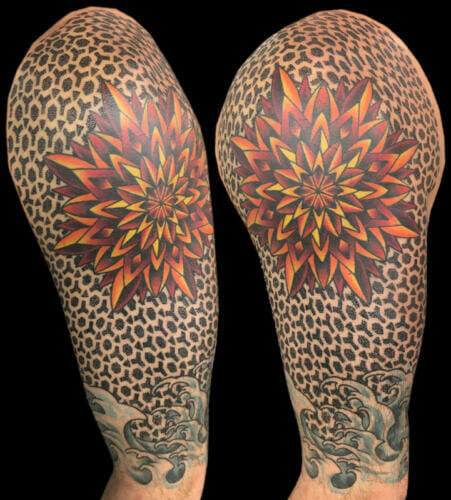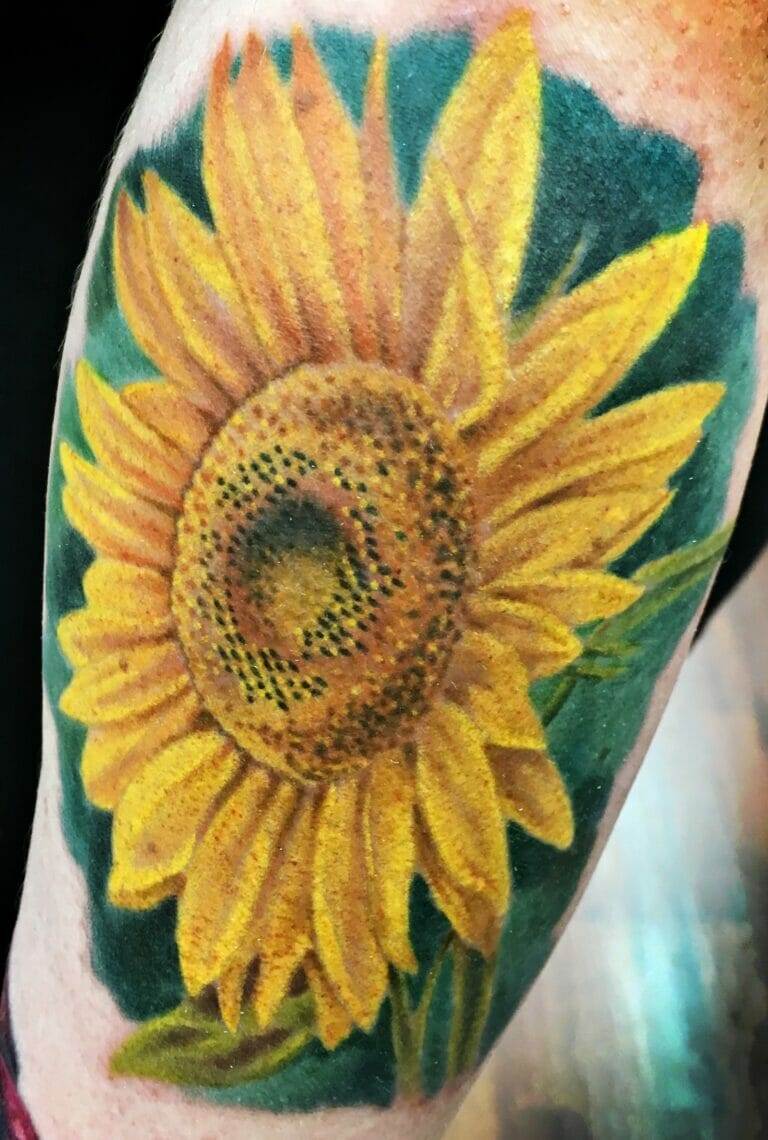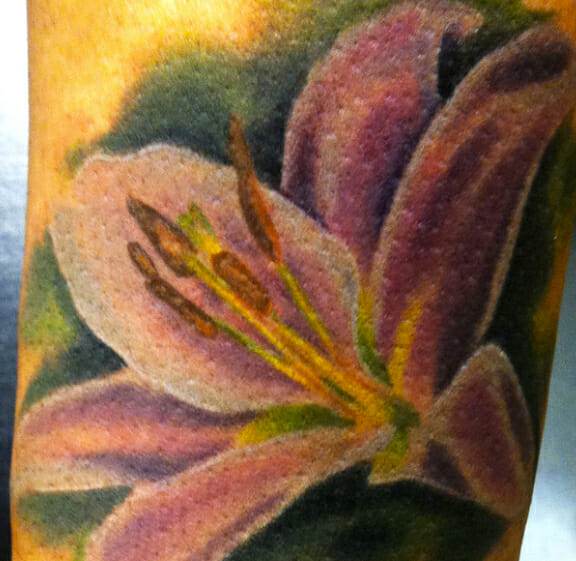
Tattoo art has undergone a remarkable transformation in recent years, moving beyond the traditional bold and defined designs to embrace a more fluid and expressive style. At the forefront of this evolution is the growing popularity of watercolor tattoos, a unique and artistic medium that has captivated the hearts and canvases of individuals seeking personalized and visually striking body art. The evolution of tattoo art has paved the way for this captivating style, which allows artists to harness the spontaneous and ethereal qualities of watercolor painting and translate them into permanent, skin-bound masterpieces.
The appeal of watercolor tattoos lies in their ability to capture the essence of the medium, with its signature blending, layering, and dripping effects. Unlike the solid lines and flat colors of traditional tattoos, watercolor tattoos offer a more organic and dynamic aesthetic, where the interplay of pigments and the artist’s hand create a sense of movement and depth. This fluid and expressive approach to tattoo art has resonated with individuals who seek to express their individuality and personal narratives through their body art, as the watercolor medium lends itself to the incorporation of personal symbolism, nature-inspired motifs, and abstract elements.
As the popularity of watercolor tattoos continues to rise, the demand for skilled artists who can masterfully translate the nuances of this medium onto the skin has also grown. The art of creating watercolor tattoos requires a deep understanding of the properties of watercolor paints and their application on the human canvas, as well as a keen eye for composition and a steady hand to achieve the desired effects. The result is a unique and captivating form of body art that stands out from the more conventional tattoo styles, offering a visually striking and highly personalized expression of the wearer’s individuality.
Key Takeaways
- Watercolor tattoos have risen in popularity due to their unique and artistic appeal
- Mastering fluid brush strokes is essential for creating beautiful watercolor tattoos
- Choosing the right pigments and inks is crucial for achieving vibrant and long-lasting results
- Designing unique concepts is key to creating personalized and meaningful watercolor tattoos
- Proper aftercare and preservation techniques are necessary to ensure the longevity of watercolor tattoos
Mastering the Fluid Brush Strokes
The creation of a watercolor tattoo is a delicate and intricate process that requires a deep understanding of the medium and its unique properties. Unlike traditional tattoo inks, which are designed to create bold and defined lines, watercolor paints present a unique set of challenges and opportunities for the artist. Mastering the fluid brush strokes and the interplay of pigments is essential to achieving the signature watercolor aesthetic that has captivated the hearts and bodies of tattoo enthusiasts.
At the heart of the watercolor tattoo process is the artist’s ability to harness the inherent fluidity and spontaneity of the medium. Watercolor paints, with their varying levels of pigment concentration and water content, behave in unpredictable ways, creating unexpected blends and drips that can lend a sense of movement and depth to the final design. Achieving this desired effect on the skin requires a deep understanding of the properties of watercolor paints, as well as the techniques for applying them in a way that captures the essence of the medium.
The role of the artist’s hand and brush control is paramount in creating the signature watercolor aesthetic. The delicate and precise application of the paint, the ability to control the flow and blending of the pigments, and the mastery of techniques like layering and dripping are all essential to the creation of a successful watercolor tattoo. The artist must possess a keen eye for composition, an intuitive understanding of color theory, and the dexterity to navigate the unique challenges of working on the human canvas. Through a combination of technical skill and artistic vision, the watercolor tattoo artist is able to transform the skin into a living, breathing canvas that captures the essence of the medium in a permanent and captivating form.
As the popularity of watercolor tattoos continues to grow, the demand for skilled artists who can masterfully translate the nuances of this medium onto the skin has also increased. The art of watercolor tattoo creation is a testament to the fusion of traditional painting techniques and the modern art of tattooing, where the artist’s hand and the canvas of the human body come together to create a truly unique and visually striking form of body art.
Choosing the Right Pigments and Inks
The creation of a watercolor tattoo is not just about the artistic vision and technical mastery of the artist; it also requires a deep understanding of the materials and inks used in the process. The selection of the right pigments and inks is crucial to ensuring the longevity, vibrancy, and safety of the final tattoo design.
Watercolor paints, with their wide range of hues and varying levels of pigment concentration, offer a diverse palette for the watercolor tattoo artist to work with. From the delicate and ethereal pastel shades to the bold and vibrant hues, the choice of pigments can significantly impact the overall aesthetic of the tattoo. Understanding the unique characteristics of each pigment, such as its transparency, staining properties, and drying time, is essential for the artist to create the desired effects and ensure the longevity of the tattoo.
In addition to the watercolor pigments, the selection of the appropriate inks for the tattoo process is equally important. The inks used in watercolor tattoos must be compatible with the watercolor medium, ensuring that they can blend seamlessly and maintain their vibrancy over time. The artist must also consider the skin-safe properties of the inks, as the health and well-being of the client are of paramount importance. By carefully selecting high-quality, skin-safe materials, the watercolor tattoo artist can create long-lasting and visually striking designs that not only captivate the eye but also prioritize the client’s safety and comfort.
The fusion of the right pigments and inks is a delicate balance that requires a deep understanding of the materials and their interactions with the human skin. The watercolor tattoo artist must possess a keen eye for color, a thorough knowledge of the properties of the materials, and a commitment to using only the highest-quality and safest products available. By mastering this aspect of the watercolor tattoo process, the artist can ensure that the final design not only reflects their artistic vision but also stands the test of time, providing the client with a unique and enduring piece of body art.
Designing Unique Watercolor Tattoo Concepts
The art of creating watercolor tattoos is not just about mastering the technical aspects of the medium; it also requires a deep well of creativity and a unique approach to design. The watercolor tattoo artist must be able to translate the spontaneous and fluid nature of traditional watercolor painting into a permanent and captivating form of body art.
At the heart of the creative process is the artist’s ability to seamlessly blend the traditional techniques of watercolor painting with the modern art of tattooing. This fusion of mediums allows for the incorporation of personal symbolism, nature-inspired motifs, and abstract elements that can be tailored to the individual client’s preferences and desires. The watercolor tattoo artist must possess a keen eye for composition, a deep understanding of color theory, and the ability to envision how the design will translate onto the human canvas.
One of the key challenges in designing unique watercolor tattoo concepts is balancing the spontaneity and fluidity of the watercolor medium with the permanence of the tattoo. The artist must find a way to capture the essence of the watercolor aesthetic, with its signature blending, layering, and dripping effects, while ensuring that the final design is visually striking and cohesive. This requires a delicate balance of planning and improvisation, as the artist must be able to anticipate the behavior of the watercolor pigments on the skin and adapt their design accordingly.
The result of this creative process is a truly unique and personalized form of body art that reflects the wearer’s individual story and experiences. Whether it’s a nature-inspired scene, a symbolic representation of a personal journey, or an abstract expression of emotion, the watercolor tattoo offers a canvas for the client to share their narrative in a visually captivating and enduring manner. By embracing the fluid and expressive nature of the watercolor medium, the watercolor tattoo artist is able to create designs that are not only aesthetically pleasing but also deeply meaningful and personal to the individual.
Ensuring Longevity: Aftercare and Preservation
| Technique | Longevity |
|---|---|
| Watercolor style | Depends on aftercare and skin type |
| Layering | Can enhance longevity |
| Color choice | Can affect how long the tattoo lasts |
The creation of a watercolor tattoo is not just about the initial design and application; it also requires a commitment to proper aftercare and preservation to ensure the longevity and vibrancy of the tattoo. Unlike traditional tattoos, which often feature bold and defined lines, watercolor tattoos require a more delicate approach to their maintenance and care.
Proper aftercare techniques are essential for maintaining the integrity and beauty of a watercolor tattoo. The artist must provide the client with detailed instructions on how to properly clean, moisturize, and protect the tattoo during the healing process. This includes recommendations on the use of gentle cleansers, fragrance-free moisturizers, and the avoidance of direct sun exposure, all of which can help to preserve the delicate and fluid nature of the watercolor design.
In addition to the immediate aftercare, the longevity of a watercolor tattoo is also influenced by various external factors, such as sun exposure and the client’s skin type. The watercolor medium is particularly susceptible to fading and distortion over time, as the pigments can be more easily broken down by UV radiation and the natural aging of the skin. To mitigate these challenges, the watercolor tattoo artist must educate their clients on the importance of sun protection, regular touch-ups, and the use of specialized products designed to preserve the vibrancy and integrity of the tattoo.
By prioritizing proper aftercare and preservation techniques, the watercolor tattoo artist can ensure that the client’s investment in their body art is protected and that the unique and captivating design continues to be a source of personal expression and pride for years to come. This commitment to the long-term care of watercolor tattoos not only enhances the client’s experience but also reinforces the artist’s dedication to the craft and their role in shaping the future of this dynamic art form.
Funhouse Guesthouse: A Haven for Watercolor Tattoo Artists
In the heart of a bustling city, nestled among the vibrant streets and eclectic neighborhoods, stands a unique and captivating studio that has become a haven for watercolor tattoo artists and enthusiasts alike. The Funhouse Guesthouse, a studio dedicated to the art of watercolor tattoos, has emerged as a beacon of creativity and innovation, drawing in a community of artists and clients who share a deep appreciation for this dynamic and expressive medium.
The story behind the Funhouse Guesthouse is one of passion, dedication, and a relentless pursuit of artistic excellence. Founded by a team of talented and visionary artists, the studio has become a hub for the exploration and advancement of watercolor tattoo art, attracting a diverse array of practitioners who bring their unique perspectives and techniques to the table.
At the heart of the Funhouse Guesthouse is a talented and diverse team of artists, each with their own distinct approach to the watercolor tattoo medium. From the delicate and ethereal designs of one artist to the bold and vibrant creations of another, the studio’s portfolio showcases the breadth and depth of the watercolor tattoo art form. These artists, driven by a shared passion for the medium and a commitment to pushing the boundaries of their craft, have become the driving force behind the Funhouse Guesthouse’s reputation as a premier destination for watercolor tattoo enthusiasts.
Beyond the walls of the studio, the Funhouse Guesthouse has also become a hub for a thriving community of watercolor tattoo enthusiasts. Through workshops, artist collaborations, and a welcoming and inclusive atmosphere, the studio has fostered a space where individuals can come together to share their love for this unique and expressive form of body art. Whether it’s a first-time client seeking a personalized and visually striking tattoo or a seasoned collector looking to add to their collection, the Funhouse Guesthouse offers a welcoming and supportive environment that celebrates the art of watercolor tattoos in all its forms.
Blending Traditional and Modern Techniques
The art of watercolor tattoos is a captivating fusion of traditional painting methods and contemporary tattoo practices, creating a dynamic and ever-evolving medium that continues to push the boundaries of body art. At the heart of this blend lies the challenge of seamlessly integrating the spontaneous and fluid nature of watercolor painting with the permanence and technical demands of the tattoo medium.
The watercolor tattoo artist must possess a deep understanding of both the traditional techniques of watercolor painting and the modern practices of tattooing. This requires a mastery of color theory, brush control, and the ability to anticipate the behavior of the watercolor pigments on the skin. The artist must also be adept at navigating the unique challenges of working on the human canvas, adapting their approach to account for factors such as skin tone, texture, and the natural contours of the body.
The integration of these traditional and modern techniques has led to a remarkable evolution in the world of watercolor tattoos. Artists are constantly experimenting with new ways to capture the essence of the watercolor medium, exploring innovative techniques such as layering, dripping, and blending to create designs that are both visually striking and deeply personal. The result is a form of body art that blends the timeless beauty of watercolor painting with the permanence and individuality of the tattoo, creating a unique and captivating expression of the wearer’s identity.
As the watercolor tattoo art form continues to evolve, the collaboration and exchange of ideas between traditional painters and contemporary tattoo artists have become increasingly important. By sharing their knowledge, techniques, and creative visions, these practitioners are pushing the boundaries of what is possible in the realm of body art, creating a dynamic and ever-changing landscape that celebrates the fusion of the old and the new.
The Emotional Impact of Watercolor Tattoos
The art of watercolor tattoos extends far beyond the realm of mere aesthetics; it is a deeply personal and emotive form of body art that has the power to captivate the hearts and souls of those who wear it. For many individuals, the decision to adorn their skin with a watercolor tattoo is not just a matter of fashion or self-expression, but a profound and meaningful act of self-discovery and personal narrative.
The unique and fluid nature of watercolor tattoos allows for the incorporation of personal symbolism, nature-inspired motifs, and abstract elements that can hold deep significance for the wearer. Whether it’s a delicate floral design that represents a cherished memory, a vibrant abstract piece that captures the essence of a transformative experience, or a symbolic representation of a personal journey, the watercolor tattoo becomes a canvas for the wearer to share their story with the world.
The emotional impact of watercolor tattoos is further amplified by the intimate and collaborative process of their creation. The client and the artist work together to translate the wearer’s vision and personal narrative into a permanent and visually striking form of body art. This collaborative process fosters a deep connection between the two, as the artist strives to capture the essence of the client’s experiences and emotions through the medium of watercolor.
The therapeutic and self-expressive nature of the watercolor tattoo process also plays a significant role in its emotional impact. For many individuals, the act of selecting and designing a watercolor tattoo can be a deeply cathartic experience, allowing them to process and externalize their thoughts, feelings, and experiences in a tangible and enduring form. The fluidity and spontaneity of the watercolor medium can also serve as a metaphor for the ebb and flow of life, providing a canvas for the wearer to explore and express their own personal growth and transformation.
As the popularity of watercolor tattoos continues to rise, the emotional resonance of this dynamic art form has become increasingly evident. The ability of watercolor tattoos to capture and convey the wearer’s unique stories and experiences has made them a powerful and deeply personal form of self-expression, one that transcends the boundaries of traditional body art and speaks to the very heart and soul of the individual.
The Future of Watercolor Tattoo Art
As the art of watercolor tattoos continues to captivate the hearts and bodies of individuals around the world, the future of this dynamic and ever-evolving medium holds immense promise. With the growing popularity of this unique form of body art and the dedication of talented artists and studios like the Funhouse Guesthouse, the possibilities for the continued evolution and innovation of watercolor tattoos are truly boundless.
One of the most exciting aspects of the future of watercolor tattoo art is the potential for further exploration and experimentation with the medium. As artists continue to push the boundaries of what is possible, we can expect to see a proliferation of new techniques, materials, and design approaches that will redefine the boundaries of what is possible in the realm of body art. From the incorporation of cutting-edge pigments and inks to the development of novel application methods, the watercolor tattoo industry is poised to undergo a transformative period of growth and innovation.
The role of dedicated studios and collectives, such as the Funhouse Guesthouse, will be instrumental in shaping the future of watercolor tattoo art. These hubs of creativity and collaboration will continue to serve as incubators for emerging talent, fostering the exchange of ideas and the development of new techniques. By providing a supportive and nurturing environment for watercolor tattoo artists to hone their craft and explore new avenues of expression, these studios will play a crucial role in pushing the boundaries of what is possible in this dynamic and ever-evolving art form.
As the watercolor tattoo industry continues to evolve, we can also expect to see a growing emphasis on the preservation and longevity of these unique and captivating designs. With advancements in aftercare products, sun protection strategies, and innovative techniques for maintaining the vibrancy and integrity of watercolor tattoos, the future of this art form will be marked by a renewed focus on ensuring that these visually striking and deeply personal works of body art stand the test of time.
Ultimately, the future of watercolor tattoo art is one of boundless potential, where the fusion of traditional painting techniques with modern tattooing methods continues to push the boundaries of creativity and innovation. As artists experiment with new color palettes, blending techniques, and styles, watercolor tattoos are evolving into intricate works of art that defy traditional tattoo norms. With advancements in technology and a growing appreciation for the unique beauty of watercolor tattoos, it is clear that this vibrant and expressive art form will only continue to flourish in the years to come.
FAQs
What are watercolor tattoos?
Watercolor tattoos are a style of tattooing that mimics the appearance of watercolor paintings. They often feature vibrant colors, fluid lines, and a lack of black outlines commonly found in traditional tattoos.
What techniques are used to create watercolor tattoos?
Watercolor tattoos are created using a variety of techniques, including blending, layering, and splattering of colors to achieve a watercolor effect. Tattoo artists may also use different needle sizes and shading techniques to create the desired look.
How long do watercolor tattoos last?
The longevity of watercolor tattoos can vary depending on factors such as the quality of the ink, the skill of the tattoo artist, and the aftercare of the tattoo. On average, watercolor tattoos can last anywhere from 5 to 10 years before needing touch-ups.
What should I consider before getting a watercolor tattoo?
Before getting a watercolor tattoo, it’s important to research and find a skilled tattoo artist who specializes in watercolor techniques. It’s also important to consider the placement of the tattoo, as areas with a lot of movement or exposure to the sun may cause the tattoo to fade more quickly.
Are watercolor tattoos more prone to fading than traditional tattoos?
Watercolor tattoos are generally more prone to fading than traditional tattoos due to the lack of black outlines and the use of lighter, more delicate colors. However, with proper aftercare and touch-ups, the longevity of a watercolor tattoo can be extended.

